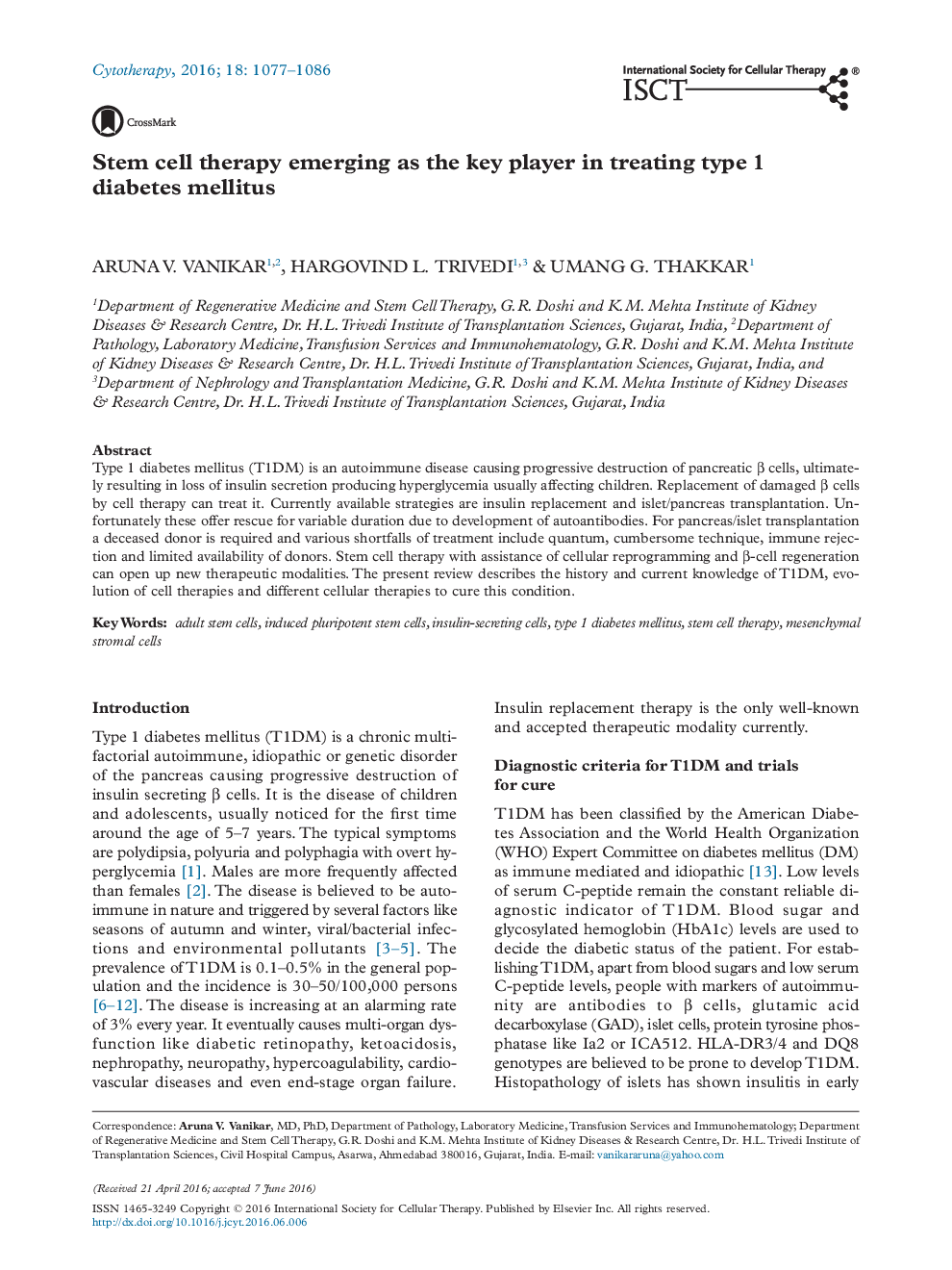| Article ID | Journal | Published Year | Pages | File Type |
|---|---|---|---|---|
| 2171005 | Cytotherapy | 2016 | 10 Pages |
•T1DM is an autoimmune disease causing progressive destruction of pancreatic β-cells, ultimately resulting in to loss of insulin secretion producing hyperglycemia, usually found in pediatrics and young adults.•Current therapeutic strategies include insulin replacement and islet/pancreas transplantation.•Stem cell therapy (SCT) with support of cellular reprogramming and β-cell regeneration will usher in the new era of treating T1DM.•SCT involves “immunological resetting” by its reproducibility under strict proliferating control to generate sufficient quantity of cells/tissue by differentiation into desired cell type(s) while maintaining the integrity of surrounding tissue and rendering a meaningful life to the recipient without causing any adverse effect.
Type 1 diabetes mellitus (T1DM) is an autoimmune disease causing progressive destruction of pancreatic β cells, ultimately resulting in loss of insulin secretion producing hyperglycemia usually affecting children. Replacement of damaged β cells by cell therapy can treat it. Currently available strategies are insulin replacement and islet/pancreas transplantation. Unfortunately these offer rescue for variable duration due to development of autoantibodies. For pancreas/islet transplantation a deceased donor is required and various shortfalls of treatment include quantum, cumbersome technique, immune rejection and limited availability of donors. Stem cell therapy with assistance of cellular reprogramming and β-cell regeneration can open up new therapeutic modalities. The present review describes the history and current knowledge of T1DM, evolution of cell therapies and different cellular therapies to cure this condition.
